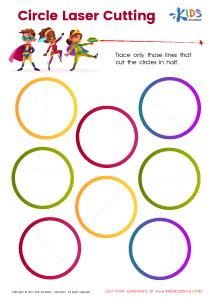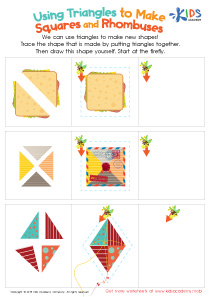Critical Thinking Normal 2D Shapes Worksheets for Ages 3-9
5 filtered results
-
From - To
Enhance your child's critical thinking skills with our engaging 2D Shapes Worksheets designed for ages 3-9. These thoughtfully crafted worksheets inspire young minds to explore, identify, and analyze various 2D shapes, fostering essential math and geometry skills. Perfect for early learners, our printable resources encourage problem-solving and logical reasoning through fun, interactive activities. With vibrant visuals and age-appropriate challenges, children will enjoy every step of their learning journey. Ideal for both classroom and at-home learning, our worksheets make understanding shapes exciting and highly effective. Help your child build a strong foundation in critical thinking and mathematical concepts today!
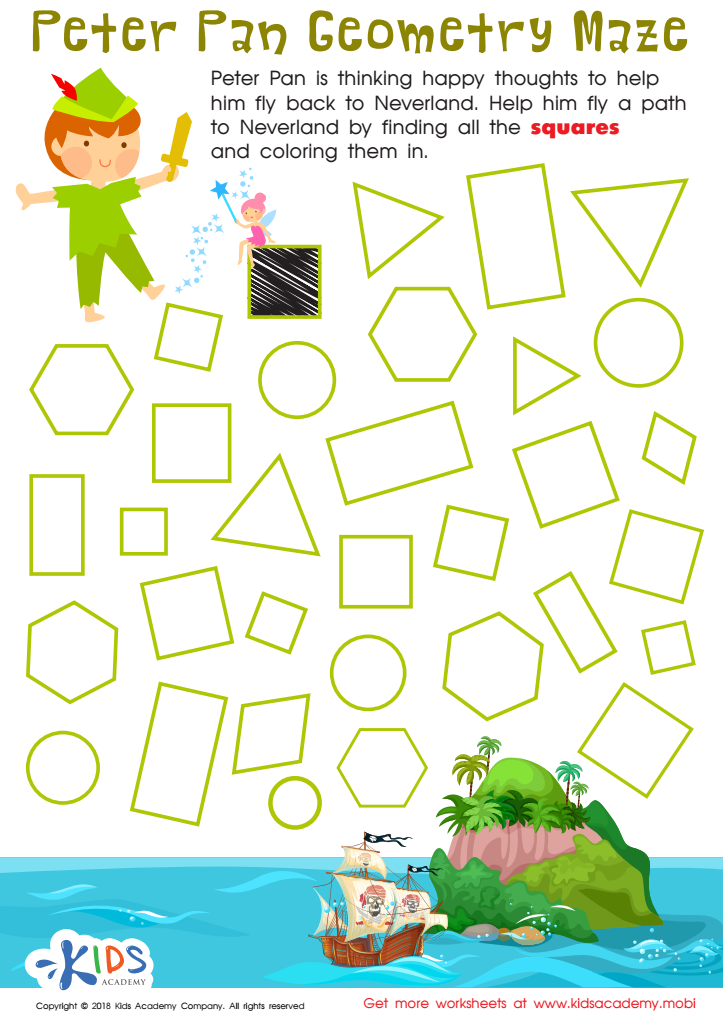

Peter Pan Worksheet
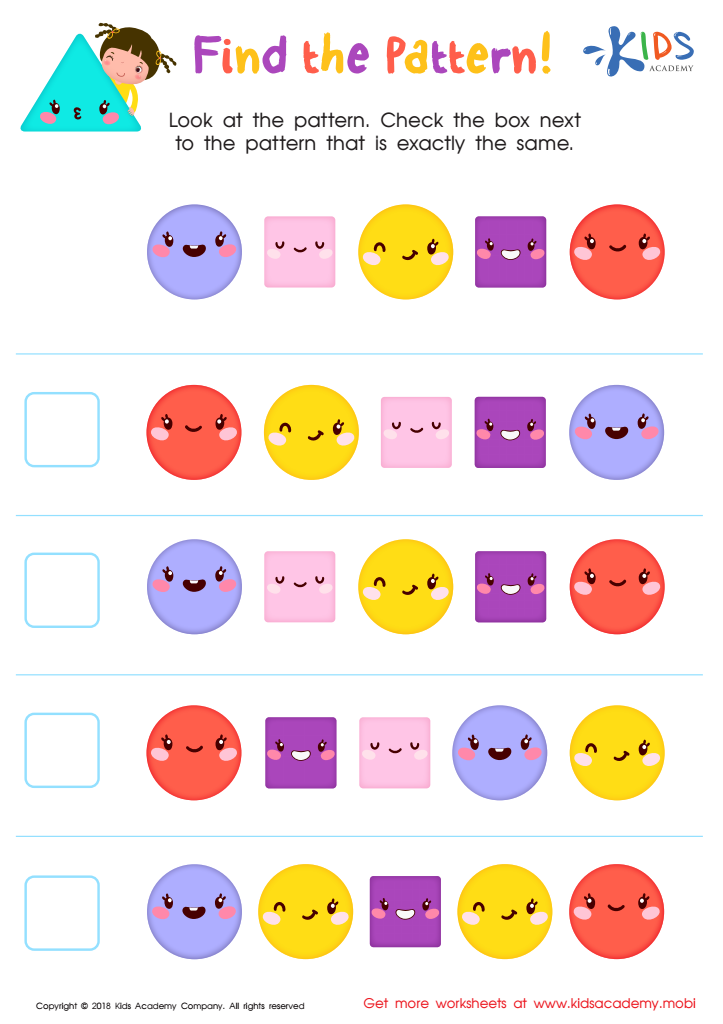

Find the Pattern Worksheet
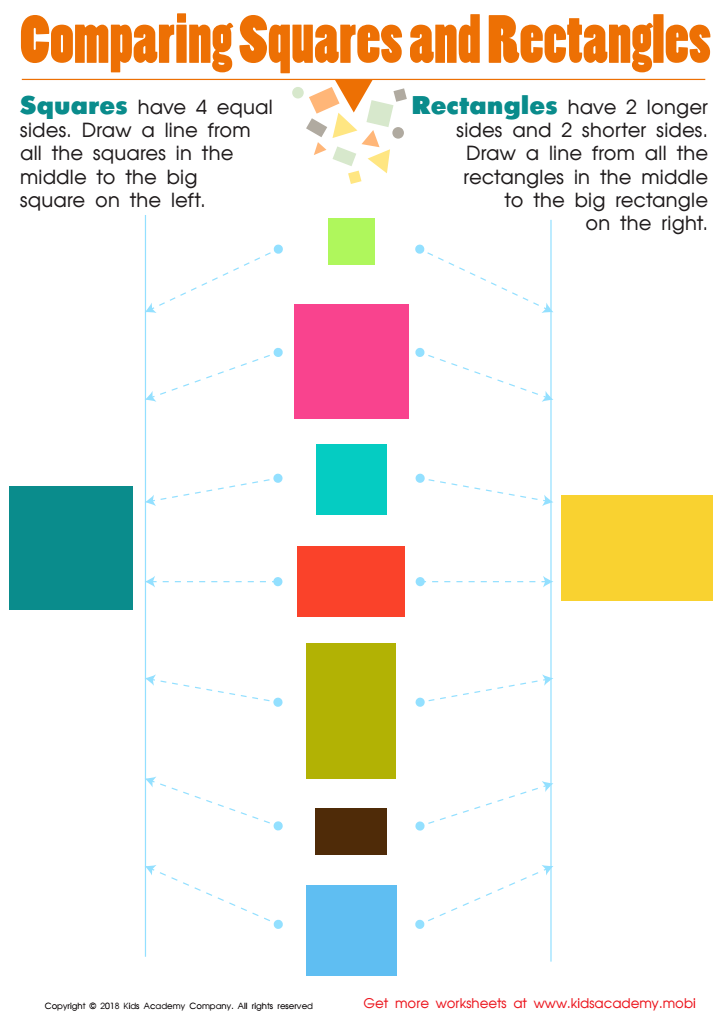

Comparing Squares Rectangles Worksheet
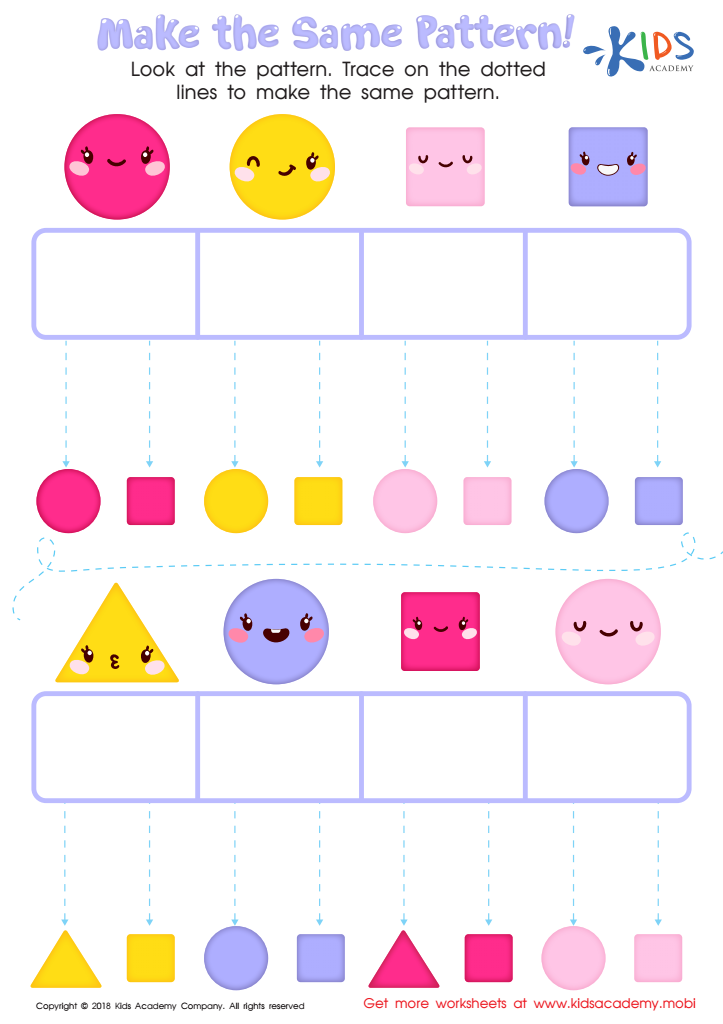

Make the Same Pattern Worksheet


Using Squares to Make Rectangles Worksheet
Critical thinking is an essential skill that enables children to analyze information, solve problems, and make informed decisions. Introducing critical thinking through familiar concepts, such as 2D shapes, for children aged 3-9 is particularly effective because it harnesses their natural curiosity and love for learning. At this developmental stage, children are highly receptive to learning new things, and shapes provide a concrete, visual way for them to engage in critical thought.
Integrating 2D shapes into early education helps children recognize patterns, categorize objects, and develop spatial awareness. By exploring shapes, children learn to observe and compare different properties, such as sides and angles, and distinguish between various shapes. These activities promote a method of systematic inquiry whereby they question, predict, and test hypotheses, altogether enhancing their problem-solving skills.
Moreover, as children interact with shapes, they exercise their ability to focus, pay attention to detail, and identify relationships between different elements—all of which are foundational aspects of critical thinking. For teachers and parents, fostering these skills early paves the way for children to excel in more complex subjects later on, like math and science, and equips them with the mindset to approach challenges logically and creatively. Thus, focusing on critical thinking using 2D shapes cultivates a strong intellectual foundation vital for lifelong learning and development.
 Assign to My Students
Assign to My Students











